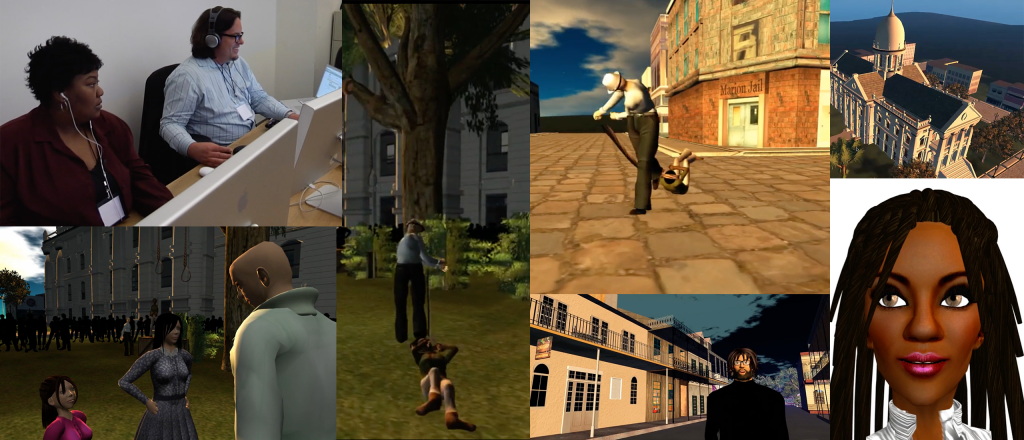Always In Season Island (2010)
By 2010, when Always in Season Island launched, the web platform Second Life had more than 1 million monthly visitors who could create avatars and explore open virtual worlds, called islands, in what was arguably the internet’s first attempt at the metaverse. Second Life was a non-gaming environment, mostly intended for leisure and recreation, such as concerts, social meet-ups, and shopping. But the documentary creators of Always in Season Island sought to courageously and controversially experiment with the platform and confront the ongoing legacy of American racial terror, by challenging their viewers with the power of agency. They recreated, in virtual life, for online visitors to explore, the setting of the August 7, 1930, lynching in Marion, Indiana, when 10,000 white men, women, and children came to watch the torture and murder of two African American men, Thomas Shipp and Abram Smith, and the 16-year old who narrowly escaped, James Cameron. (On that day, a person in the lynch mob came forward to declare Cameron innocent, and the rope was removed from his neck.) By drawing on this historical event, the creators of this interactive documentary experience suggest that passive viewing of documentary might be equated with the positionality of bystandership. Avoiding gratuitous violence, the creators offer their visitors tasks to complete, and prompts to consider, that either encourage or stop the lynching from occuring. Ultimately, visitors intimately learn how their own behaviors can help end dehumanization and violence today.
For creating a virtual world on the Second Life platform (a precursor to the metaverse) to push the conventions of documentary and challenge audiences to become agents of change who can make choices to prevent a lynching in 1930s America, Always in Season Island wins a Peabody.

